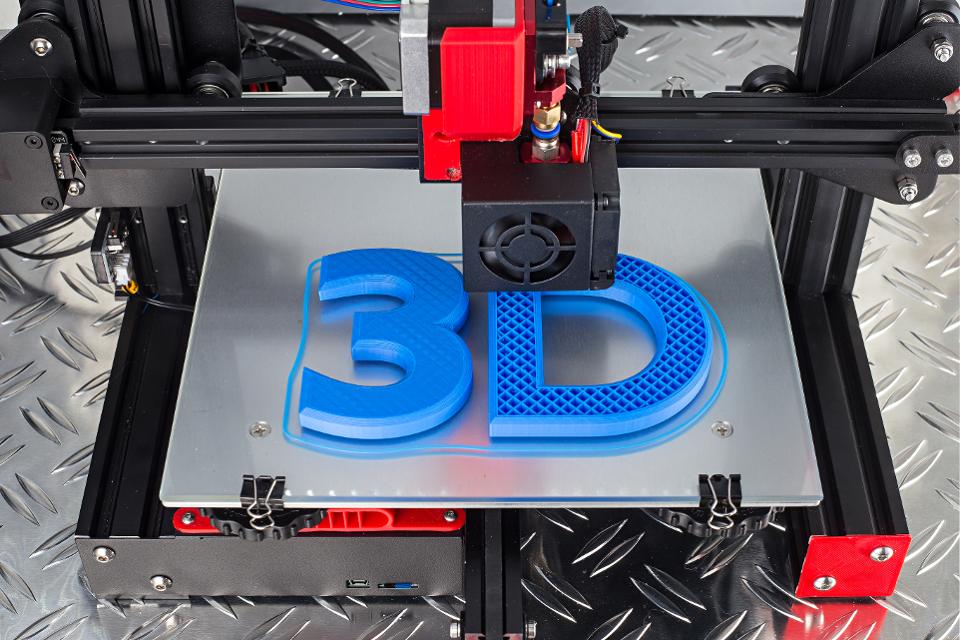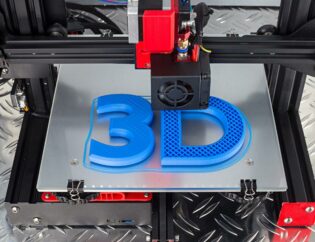
3D printing has revolutionized manufacturing and prototyping, offering unparalleled flexibility and precision. However, achieving optimal print quality requires meticulous calibration of various parameters, one of the most critical being PID tuning. PID (Proportional-Integral-Derivative) control is essential for maintaining stable temperatures in the 3D printer's hotend and heated bed, ensuring consistent extrusion and layer adhesion. This comprehensive guide delves into the intricacies of PID tuning, explaining its importance, methods, common mistakes, advanced tips, and real-world applications.
What is PID Control?
PID control is a feedback mechanism widely used in industrial control systems to maintain a desired setpoint by adjusting the control inputs. In the context of 3D printing services, PID control regulates the temperature of the hotend and heated bed.
-
Proportional (P): The proportional term produces an output value that is proportional to the current error value. It determines how aggressively the system responds to the error.
-
Integral (I): The integral term is concerned with the accumulation of past errors. It corrects the accumulated offset that may have resulted from the proportional term alone.
-
Derivative (D): The derivative term predicts future error based on its rate of change. It helps to dampen the system's response, reducing overshoot and oscillations.
Why is PID Control Important in 3D Printing?
Maintaining stable temperatures is crucial for several reasons in 3D Printing services:
-
Consistent Extrusion: Stable hotend temperatures ensure consistent filament melting and extrusion, preventing issues like under-extrusion or over-extrusion.
-
Layer Adhesion: Stable heated bed temperatures help maintain proper adhesion between layers, reducing the risk of warping or detachment.
-
Print Quality: Temperature fluctuations can lead to defects such as stringing, blobs, or layer inconsistencies, affecting the overall print quality.
Methods to Tune PID
Manual PID Tuning
Manual PID tuning involves adjusting the PID parameters (P, I, and D) and observing the system's response. This method requires patience and a systematic approach.
- Initial Setup:
- Ensure the printer is in a stable environment with minimal drafts or temperature fluctuations.
- Preheat the hotend and heated bed to their typical operating temperatures.
- Adjusting Proportional (P) Term:
- Start with a low P value and gradually increase it.
- Observe the temperature response. The goal is to achieve a quick response without significant overshoot.
- If the temperature oscillates, the P value is too high. Reduce it until the oscillations are minimized.
- Adjusting Integral (I) Term:
- Increase the I value gradually.
- The I term helps eliminate any steady-state error (offset from the setpoint).
- If the temperature stabilizes but takes too long to reach the setpoint, increase the I value.
- If the temperature oscillates or overshoots, reduce the I value.
- Adjusting Derivative (D) Term:
- Increase the D value gradually.
- The D term helps dampen the system's response, reducing overshoot and oscillations.
- If the temperature response is sluggish, reduce the D value.
- If the temperature oscillates, the D value may be too high.
- Fine-Tuning:
- Continue adjusting the P, I, and D values iteratively until the temperature response is stable and reaches the setpoint quickly without significant overshoot or oscillations.
Automatic PID Tuning
Many modern 3D printers and firmware (such as Marlin) of 3D Printing Bangalore offer automatic PID tuning functions, simplifying the process.
- Initiate PID Tuning:
- Use the printer's control interface or send a G-code command to start the PID tuning process. For Marlin firmware, the command is typically M303 E0 S200 C8 for the hotend and M303 E-1 S60 C8 for the heated bed.
- E0 specifies the hotend (use E-1 for the heated bed).
- S200 sets the target temperature (adjust as needed for your filament).
- C8 specifies the number of cycles (more cycles provide more accurate results).
- Observe the Process:
- The printer will cycle the temperature up and down, adjusting the PID parameters automatically.
- Once the process is complete, the new PID values will be displayed.
- Save the PID Values:
- Save the new PID values to the printer's firmware using the appropriate commands. For Marlin firmware, use M301 P<value> I<value> D<value> for the hotend and M304 P<value> I<value> D<value> for the heated bed.
- Store the values permanently using the M500 command.
Software Tools for PID Tuning
Several software tools can assist with PID tuning in 3D Printing online, providing graphical interfaces and advanced features.
- OctoPrint:
- OctoPrint is a popular 3D printer management software that includes a PID tuning plugin.
- The plugin provides a user-friendly interface for initiating and monitoring PID tuning processes.
- It also offers graphical representations of temperature responses, making it easier to fine-tune PID parameters.
- Pronterface:
- Pronterface is another widely used 3D printer control software that supports PID tuning in 3D Printing in Bangalore.
- It allows users to send G-code commands for PID tuning and monitor the process in real-time.
- The software provides a graphical display of temperature responses, aiding in manual tuning efforts.
Common Mistakes in PID Tuning
Over-Tuning
One common mistake is over-tuning the PID parameters, leading to excessive sensitivity and instability.
- Symptoms: Rapid oscillations, overshoot, and erratic temperature behavior.
- Solution: Reduce the P, I, and D values incrementally until the temperature stabilizes.
Under-Tuning
Under-tuning results in sluggish temperature responses and prolonged settling times.
- Symptoms: Slow temperature changes, significant steady-state error, and poor print quality.
- Solution: Gradually increase the P, I, and D values until the temperature response improves.
Ignoring Environmental Factors
Environmental factors such as drafts, ambient temperature fluctuations, and printer enclosure conditions can affect PID tuning in 3D Printing service Bangalore.
- Symptoms: Inconsistent temperature behavior despite proper PID tuning.
- Solution: Ensure the printer is in a stable environment with minimal external influences. Consider using an enclosure to maintain consistent conditions.
Not Saving PID Values
Failing to save the tuned PID values to the printer's firmware can result in losing the settings after a power cycle.
- Symptoms: Reverting to default PID values after restarting the printer.
- Solution: Always save the tuned PID values using the appropriate commands (e.g., M500 for Marlin firmware).
https://www.youtube.com/watch?v=h9Rdid-T-Gw
Advanced Tips for PID Tuning
Adaptive PID Control
Adaptive PID control involves dynamically adjusting PID parameters in 3D Printing services in Bangalore based on real-time conditions.
- Benefits: Improved temperature stability under varying conditions, such as different filament types or ambient temperatures.
- Implementation: Some advanced firmware and control systems support adaptive PID control. Consult your printer's documentation for specific instructions.
Multi-Zone PID Control
Multi-zone PID control involves dividing the heated bed or hotend into multiple zones, each with its own PID parameters.
- Benefits: Enhanced temperature uniformity across the print surface, reducing warping and improving print quality.
- Implementation: Requires advanced firmware and hardware support. Consult your printer's documentation for specific instructions.
PID Tuning for Different Filaments
Different filaments have varying thermal properties, necessitating different PID settings for 3D Printing service in India.
- PLA: Typically requires lower temperatures and more aggressive PID settings for quick response.
- ABS: Higher temperatures and more conservative PID settings to prevent overshoot and warping.
- PETG: Moderate temperatures and balanced PID settings to manage stringing and adhesion.
Monitoring and Logging Temperature Data
Monitoring and logging temperature data can provide valuable insights into the effectiveness of PID tuning in 3D Printing services in Bangalore.
- Tools: Use software tools like OctoPrint or Pronterface to log temperature data during prints.
- Analysis: Analyze the temperature data to identify patterns, inconsistencies, and areas for improvement.
Improving Print Quality
Proper PID tuning can significantly enhance print quality by maintaining stable temperatures.
- Consistent Extrusion: Stable hotend temperatures ensure consistent filament flow, reducing defects like under-extrusion or over-extrusion.
- Layer Adhesion: Stable heated bed temperatures improve layer adhesion, reducing warping and detachment.
Reducing Print Failures
Temperature fluctuations can lead to print failures, such as layer separation, warping, and poor adhesion when online 3D Printing India.
- Prevention: Proper PID tuning minimizes temperature fluctuations, reducing the risk of print failures and improving overall reliability.
Optimizing Print Speed
Stable temperatures allow for higher print speeds without compromising quality.
- Faster Prints: With well-tuned PID settings, you can increase print speeds while maintaining consistent extrusion and adhesion.
- Efficiency: Optimizing print speed improves efficiency, reducing print times and increasing productivity.
Enhancing Multi-Material Printing
Multi-material printing often involves different filaments with varying thermal properties.
- Temperature Management: Proper PID tuning ensures stable temperatures for each material, improving print quality and reducing defects.
- Seamless Transitions: Stable temperatures facilitate smooth transitions between materials, enhancing the overall print quality.
Our manufacturing experience can help you make decisions faster.
Choose one to get started
Case Studies and Practical Examples
Case Study 1: Tuning for High-Temperature Materials
A user printing with high-temperature materials like polycarbonate (PC) faced challenges with maintaining stable hotend temperatures. The default PID settings led to significant temperature fluctuations, causing poor layer adhesion and warping in online 3D Printing Bangalore.
-
Solution: The user performed manual PID tuning, gradually increasing the P and I values while keeping the D value low to prevent overshoot. After several iterations, the hotend temperature stabilized, resulting in improved print quality and reduced warping.
Case Study 2: Multi-Material Printing with PLA and ABS
A user printing multi-material parts with PLA and ABS experienced issues with temperature stability during material transitions. The default PID settings were not suitable for both materials, leading to inconsistent extrusion and poor adhesion.
-
Solution: The user implemented adaptive PID control, allowing the printer to adjust PID parameters dynamically based on the active material. This approach ensured stable temperatures for both PLA and ABS, resulting in seamless transitions and high-quality prints.
Practical Example: Using OctoPrint for PID Tuning
A user utilized OctoPrint's PID tuning plugin to optimize the hotend and heated bed temperatures. The graphical interface provided real-time temperature data, making it easier to fine-tune the PID parameters in affordable 3D Printing services.
-
Process: The user initiated the PID tuning process through OctoPrint, monitored the temperature response, and adjusted the P, I, and D values accordingly. The plugin's graphical representation helped identify and correct any oscillations or overshoot, resulting in stable temperatures and improved print quality.
Additional Resources and Community Support
Online Forums and Communities
Engaging with online forums and communities can provide valuable insights and support for PID tuning:
-
Reddit: Subreddits like r/3Dprinting and r/3Dprintingtech offer discussions, tips, and troubleshooting advice from experienced users.
-
3D Printing Forums: Websites like 3DPrintBoard and 3D Hubs Community provide dedicated sections for PID tuning and printer calibration.
Tutorials and Guides
Exploring tutorials and guides can enhance your understanding of PID tuning and provide step-by-step instructions:
-
YouTube: Channels like Teaching Tech and CHEP offer detailed video tutorials on PID tuning for various 3D printers and firmware.
-
Blogs and Articles: Websites like MatterHackers publish comprehensive guides and articles on PID tuning and printer calibration.
Manufacturer Support
Consulting your printer's manufacturer for support and documentation can provide specific instructions and recommendations for PID tuning:
-
Official Documentation: Many printer manufacturers provide detailed documentation and guides for PID tuning on their websites.
-
Customer Support: Contacting customer support can provide personalized assistance and troubleshooting advice for PID tuning issues.
Software and Tools
Utilizing software and tools designed for 3D printer management and calibration can simplify the PID tuning process:
-
OctoPrint: The PID tuning plugin in OctoPrint offers a user-friendly interface and graphical representations of temperature responses.
-
Pronterface: Pronterface supports PID tuning and provides real-time monitoring of temperature data.
Conclusion
Mastering PID tuning is essential for achieving optimal print quality and reliability in 3D printing chennai. By understanding the principles of PID control, employing effective tuning methods, avoiding common mistakes, and leveraging advanced techniques, you can optimize your 3D printer's performance. Engaging with online communities, exploring tutorials and guides, and utilizing software tools can further enhance your PID tuning skills. Whether you're a hobbyist or a professional, mastering PID tuning will enable you to achieve consistent, high-quality prints and unlock the full potential of your 3D printer. This comprehensive guide provides the knowledge and tools needed to confidently tackle PID tuning, ensuring your 3D printing projects are successful and of the highest quality.


